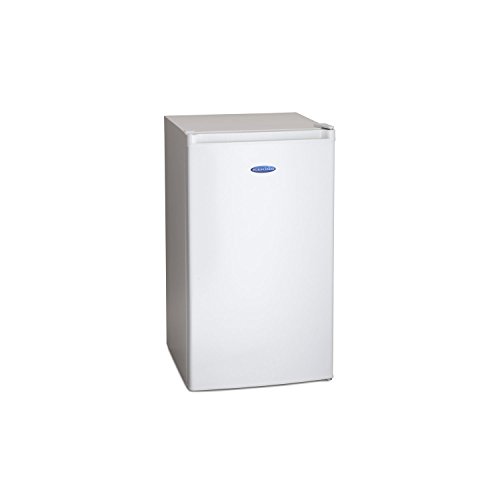A Comprehensive Guide to Buying the Right Fridge for Your Home
When it comes to investing in a dependable cooking area appliance, the refrigerator reigns supreme. Best Fridge Deal is necessary for protecting food, drinks, and leftovers, playing a critical role in preserving the freshness of perishable items. Offered the myriad of alternatives offered in the market today, picking the best fridge can be overwhelming. This short article aims to direct possible buyers through the process by present valuable insights, factors to consider, and frequently asked concerns.
Table of Contents
Kinds of Refrigerators
- 1.1 Top Freezer Refrigerators
- 1.2 Bottom Freezer Refrigerators
- 1.3 Side-by-Side Refrigerators
- 1.4 French Door Refrigerators
- 1.5 Compact Refrigerators
Secret Features to Consider
- 2.1 Size and Capacity
- 2.2 Energy Efficiency
- 2.3 Additional Features
- Buying Tips
- Often Asked Questions (FAQs)
- Conclusion
1. Types of Refrigerators
Understanding the various styles of refrigerators readily available is the initial step in making a notified choice. Here are the most typical types:
1.1 Top Freezer Refrigerators
Leading freezer refrigerators feature a traditional style where the freezer section lies at the top. They are frequently more inexpensive and supply ample storage space.
1.2 Bottom Freezer Refrigerators
This model has the freezer at the bottom and the refrigerator at the top. It offers simpler access to fresh food, making it a popular option for lots of homes.
1.3 Side-by-Side Refrigerators
Side-by-side designs include a vertical split design, allowing access to both the refrigerator and freezer areas side by side. They are ideal for small kitchen areas where space is at a premium.
1.4 French Door Refrigerators
These supply an elegant style with double doors for the refrigerator and a bottom drawer for the freezer. They are large and often featured advanced features, making them a preferred among contemporary homeowners.
1.5 Compact Refrigerators
Designed for restricted spaces, compact refrigerators appropriate for dormitory, offices, or as secondary units in homes. They are energy-efficient and generally come with standard features.
| Refrigerator Type | Suitable For | Price Range |
|---|---|---|
| Top Freezer | Budget-conscious buyers | ₤ 400 - ₤ 800 |
| Bottom Freezer | Convenience and ease of use | ₤ 600 - ₤ 1,200 |
| Side-by-Side | Smaller kitchen areas | ₤ 800 - ₤ 1,500 |
| French Door | Households and advanced functions | ₤ 1,200 - ₤ 3,000 |
| Compact | Small spaces and offices | ₤ 250 - ₤ 600 |
2. Secret Features to Consider
When searching for a fridge, the features can substantially impact both efficiency and benefit.
2.1 Size and Capacity
- Measurement: Measure the readily available area where the refrigerator will go. Pay attention to height, width, and depth.
- Capability Selection: Choose a fridge with sufficient storage based on home size-- normally, 4-6 cubic feet per family member is a great guideline.
2.2 Energy Efficiency
- Search for the Energy Star label, which signifies that an item fulfills energy effectiveness standards set by the U.S. Environmental Protection Agency.
- Energy-efficient designs may have a greater upfront cost however can conserve cash in the long run through lower utility costs.
2.3 Additional Features
- Ice makers, water dispensers, adjustable racks, and temperature controls can improve performance.
- Smart features like Wi-Fi connection can provide remote access to temperature controls and informs.
3. Purchasing Tips
Here are some suggestions to help streamline the buying process:
- Research Brands: Look into relied on brands that provide warranties and customer care.
- Read Reviews: Check online evaluations and customer reports to determine the dependability and performance of various designs.
- Compare Prices: Shop around and look for sales, particularly during vacations or seasonal clearance events.
- Go to Showrooms: Physically examining the refrigerator can offer additional insights that might not appear online, particularly regarding size and ease of use.
4. Frequently Asked Questions (FAQs)
Q1: How long do refrigerators typically last?
A: Most refrigerators have a life-span of 10 to 20 years, depending on maintenance and usage.
Q2: What is the very best way to maintain a refrigerator?
A: Regularly tidy the coils, inspect seals, and thaw if needed. Likewise, keep a constant temperature level.
Q3: Do I require a water line for a refrigerator with a water dispenser?
A: Yes, refrigerators with built-in water and ice dispensers usually need a water line setup.
Q4: How can I enhance the energy efficiency of my refrigerator?
A: Keep the fridge far from heat sources, inspect door seals, and avoid overloading.
Q5: What is the distinction in between a basic and counter-depth refrigerator?
A: Standard refrigerators are much deeper, while counter-depth designs are developed to match the depth of your cooking area counter tops, leading to a more built-in look.
Purchasing a refrigerator is a considerable financial investment, but with the right understanding and considerations, one can make an educated choice that satisfies their cooking requirements and fits effortlessly into their home. With a clearer understanding of the different kinds of refrigerators, key functions, and purchasing ideas, consumers can browse the shopping process with self-confidence. Eventually, the best refrigerator will not just cool food but will become a practical cornerstone of the kitchen for years to come.

